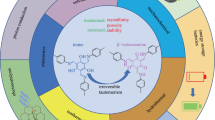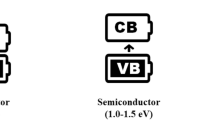Abstract
Surface conductive polyurethane films from poly(propylene glycol), toluene 2,4-diisocyanate, 3-methyl thiophene and butyltin dilaurate can be successfully prepared by the diffusion-oxidative polymerization method. Various effects of the doping conditions, such as the reaction time, the FeCl3 concentration, the weight ratio of the 3-methyl thiophene to PU and the temperature on the electrical conductivity and thickness of the conductive layer of the 3-methyl thiophene/PU composite were investigated. Decomposition temperature rises gradually from pure undoped PU to doped composite that indicates blending took place in FeCl3/ethyl acetate solution. As oxidative reaction time increases, the electrical conductivity of the 3-methyl thiophene doped PU film increases together with the thickness of the coating layer. With increasing FeCl3 concentration and weight ratio of the 3-methyl thiophene to PU, the thickness of the coating layer decreases, while the electrical conductivity increases. The increase of the thickness of the PU film leads to the rise of the electrical conductivity. The thickness of the coating layer decreases, while the electrical conductivity of the 3-MT doped PU film increases with increasing reaction temperature. As the reaction time and temperature increase, the polar components of the PU film increase resulting into the increase of moisture regain value.
Similar content being viewed by others
References
Allen, M. H., Organic conductors, Marcel Dekker, New York (1994).
Bocchi, V., Gardini, G. P. and Rapi, S., “Highly electroconductive polypyrrole composites,” J. Mater. Sci. Lett., 6, 1283 (1987).
Changjinag, L. and Zhigang, S., “Diffusion-oxidative polymerization of transparent and conducting polypyrrole-poly(ethylene terephthalate) composites,” Synthetic Metals, 40, 23 (1991).
de Barros, R. A., Martins, C. R. and de Azevedo, W.M., “Writing with conducting polymer,” Synthetic Metals, 155, 35 (2005).
Flandin, L., Bréchet, Y. and Cavaillié, J.Y., “Electrically conductive polymer nanocomposites as deformation sensors,” Composites Science and Technology, 61, 895 (2001).
Fowkes, F. M., “Determination of interfacial tensions, contact angles, and dispersion forces in surfaces by assuming additivity of intermolecular interactions in surfaces,” J. Phys. Chem., 66, 382 (1962).
Kim, H. R., Kim, Y. D., Kim, K. I., Shim, J. H., Nam, H. and Kang, B. K., “Enhancement of physical and chemical properties of thin film Ag/AgCl reference electrode using a Ni buffer layer,” Sensors and Actuators, 97, 348 (2004).
Kim, J.Y., Sohn, D.W., Sung, Y.Y. and Kim, E. R., “Fabrication and characterization of conductive polypyrrole thin film prepared by in situ vapor-phase polymerization,” Synthetic Matals, 132, 309 (2003).
Lee, K. S., Lee, S. H., Mo, Y.H., Nahm, K. S., Kim, J. J. and Lee, C. H., “Electrical characterization of C-coated nickel silicide nanowires grown on Ni-loaded Si substrate,” Korean J. Chem. Eng., 21, 1240 (2004).
Meixiang, W., Ming, L., Junchao, L. and Zhenxing, L., “Transparent and conducting coatings of polyaniline composites,” Thin Solid Films, 259, 188 (1995).
Migahed, M. D., Fahmy, T., Ishra, M. and Barakat, A., “Preparation, characterization, and electrical conductivity of polypyrrole composite films,” Polymer Testing, 23, 361 (2004).
Mitsuyuki, M., Isao, H. and Masato, N., “Conducting polypyrrole composite thin films chemically prepared by spreading on surface of aqueous solution containing oxidizing agent,” J. Appl. Polym. Sci., 36, 1639 (1988).
Omoda, M., Tada, K. and Shinkuma, A., “In situ polymerization process of polypyrrole ultrathin films,” Thin Solid Films, 499, 61 (2006).
Owens, D. K. and Wendt, R.C., “Estimation of the surface free energy of polymer,” J. Appl. Polym. Sci., 13, 1741 (1969).
Park, C. R., Kim, Y. C. and Park, N. K., “Catalytic recycling of waste polymer — recycling on the glycolysis of waste polyurethane foam automotive seats,” J. Korean Ind. Eng. Chem., 11, 105 (2000).
Park, S. J., Park, W. B. and Lee, J. R., “Roles of unsaturated polyester in the epoxy matrix system,” Polym. J., 32, 28 (1999).
Roselena, F., Wilson, A.G. and De Paoli, Marco-A., “An elastomeric conductor based on polyaniline prepared by mechanical mixing,” Polymer, 40, 5497 (1999).
Singh, R., Kaur, A., Yadav, K. L. and Bhattacharya, D., “Mechanism of dc conduction in ferric chloride doped poly(3-methyl thiophene),” Current Applied Physics, 3, 235 (2003).
Takeaki, O. and Seizo, M., “Highly transparent and conducting polypyrrole-poly(vinyl alcohol) composite films prepared by gas state polymerization,” Polym. J., 18, 95 (1986).
Wiriya, T., Richard, J. S. and Maurice Balik, C., “Bridged double percolation in conductive polymer composites: an electrical conductivity, morphology and mechanical property study,” Polymer, 43, 3717 (2002).
Yigit, S., Hacaloglu, J., Akbulut, U. and Toppare, L., “A pyrolysis mass spectrometry study of polythiophene — synthetic rubber conducting polymer composites,” Synthetic Metals, 132, 309 (2003).
Author information
Authors and Affiliations
Corresponding author
Rights and permissions
About this article
Cite this article
Lee, EK., Choi, SY. Electrically conductive composites prepared from 3-methyl thiophene by the FeCl3 oxidation method. Korean J. Chem. Eng. 23, 1055–1062 (2006). https://doi.org/10.1007/s11814-006-0029-8
Received:
Accepted:
Issue Date:
DOI: https://doi.org/10.1007/s11814-006-0029-8




